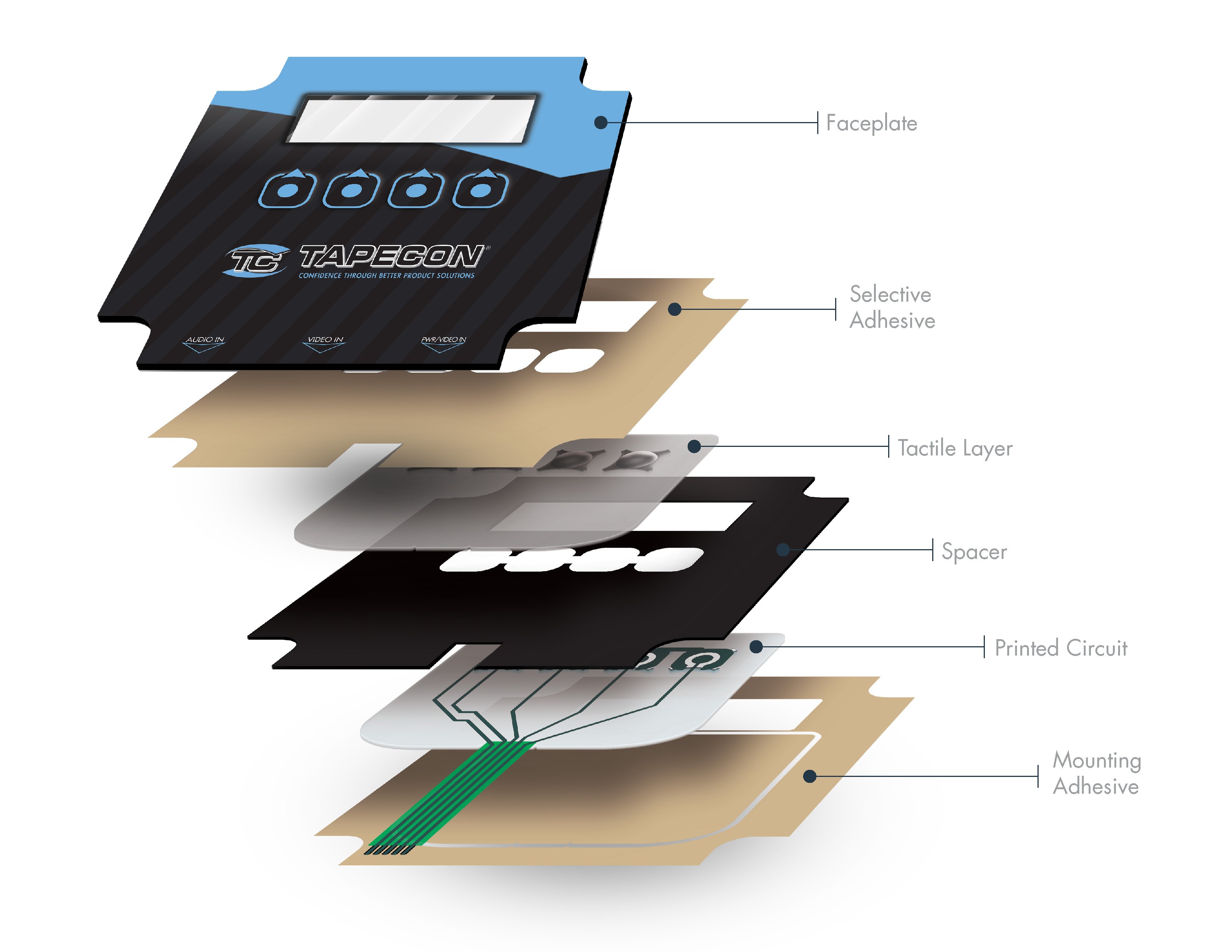Exploring the Manufacturing Process of Durable Membrane Switches
Membrane Change Technology: The Key to Trustworthy and Economical User Interfaces
Membrane switch technology has arised as a pivotal element in the design of customer interfaces, giving both integrity and cost-effectiveness across a diverse variety of applications. As we check out the multifaceted benefits of membrane switches, their possibility for innovation raises concerns regarding future applications and evolving patterns.
Recognizing Membrane Switch Over Technology
Membrane switch modern technology is a widely used interface solution in numerous digital tools, offering a smooth mix of functionality and style. This technology includes numerous layers of products, normally including a visuals overlay, spacer layer, and a circuit layer. The graphic overlay shows the user interface components, while the spacer layer separates the circuit layer from the overlay up until a user triggers a button.
When stress is related to the overlay, the circuit layer completes the electrical circuit, sending out a signal to the device. This system permits various setups, including tactile responses and backlighting alternatives, boosting individual communication. Membrane buttons are generally produced making use of sturdy products such as polyester or polycarbonate, guaranteeing longevity and resistance to environmental factors like wetness and dust.
The flexibility of membrane layer switches over allows their application in varied sectors, consisting of clinical devices, consumer electronics, and industrial controls. Their portable layout permits for integration right into space-constrained environments, providing an effective interface without jeopardizing aesthetic allure. Understanding the complexities of membrane switch innovation is vital for producers and designers seeking to produce trustworthy and effective human-machine interfaces.
Trick Advantages of Membrane Switches
While various interface solutions exist, membrane changes offer unique advantages that make them a preferred selection in many applications. Among the main benefits is their sturdiness; membrane layer buttons are made to endure rough ecological problems, consisting of moisture, dirt, and temperature changes, making sure lasting performance. This durability considerably lowers the requirement for frequent replacements, thereby decreasing general maintenance expenses.

In addition, membrane layer buttons are light-weight and small, making them ideal for applications where space is restricted. Their low-profile style adds to a sleek look without jeopardizing functionality.
Cost-effectiveness is likewise a notable advantage, as the production process for membrane switches over often tends to be cheaper compared to standard mechanical switches. This cost, incorporated with their dependability and simplicity of installment, positions membrane layer switches over as a sensible remedy for a vast variety of sectors looking for efficient and efficient individual interfaces.
Applications Throughout Numerous Industries
How do membrane switches adjust to the diverse requirements of numerous industries? Membrane switch modern technology is progressively recognized for its adaptability, making it appropriate for a large range of applications throughout multiple markets.
In consumer electronics, membrane layer buttons offer a portable option for remotes and home appliances, improving customer experience through user-friendly style. Additionally, the industrial sector leverages membrane switches for machinery control board, benefiting from their resistance to rough settings, such as moisture and dust.
Army and aerospace applications likewise use membrane layer switches for their integrity and capacity to endure severe problems, making sure operational performance in crucial scenarios. Moreover, the food and drink industry adopts these buttons for automated systems, where sanitation and simplicity of procedure are vital. Ultimately, membrane layer switches are customized to meet the unique demands of each sector, proving their vital duty in modern innovation interfaces
Design and Modification Choices

In the world of membrane layer switch modern technology, style and modification options play a critical function in improving functionality and customer communication. These buttons can be tailored to fulfill specific functional requirements and visual choices, making them flexible components in different applications.
One of the primary personalization alternatives is the layout of the button itself, which can be made to fit unique user interfaces and ergonomic considerations. By adjusting the shape, size, and arrangement of buttons, manufacturers can create user-friendly styles that assist in convenience of usage. Additionally, the unification of various colors and graphic overlays allows for branding and enhanced presence, guaranteeing that individuals can promptly recognize functions.
Moreover, membrane buttons can be engineered with numerous tactile comments mechanisms, such as increased switches or audible clicks, to boost the user experience. Different products can also be selected for durability and ecological resistance, resolving elements such as wetness, temperature fluctuations, and chemical exposure.
Ultimately, the considerable layout and modification alternatives readily available in membrane layer switch innovation equip organizations to create customized options that not only satisfy useful needs yet likewise line up with their branding and functional needs.

Future Fads in Membrane Buttons
As membrane switch innovation proceeds to develop, future fads are progressively concentrated on enhancing user experience and incorporating innovative capabilities. One substantial pattern is the integration of touch-sensitive and capacitive technologies right into standard membrane layer buttons. This advancement enables more helpful hints more instinctive interface, offering tactile responses while preserving a streamlined layout.
An additional emerging trend is using environmentally friendly products, driven by the growing visit site need for sustainable manufacturing techniques. Makers are seeking to lower their carbon impact by using recyclable substrates and low-impact inks, aligning with worldwide sustainability objectives.
Moreover, the increase of the Net of Points (IoT) is motivating the unification of clever attributes into membrane buttons. Boosted connectivity alternatives will certainly make it possible for tools to connect with each other, enabling smooth assimilation into more comprehensive systems.
Additionally, improvements in printing innovations, such as electronic printing, are permitting for better style flexibility and modification. This enables suppliers to generate complex designs and lively colors cost-effectively.

Verdict
In final thought, membrane button technology stands for an essential advancement in individual interface style, using significant benefits in resilience, personalization, and cost-effectiveness. As advancements proceed to emerge, especially in touch-sensitive user interfaces and lasting products, the capacity for membrane layer switches over to boost user experience and functionality continues to top article be appealing.